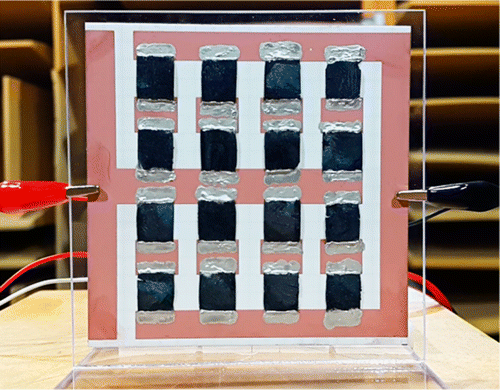Bringing graphene speakers to the mobile market

Graphene has been hailed as a wonder material since it was first made more than a decade ago. It's showing up in an increasing number of products, including coatings, sports equipment and even light bulbs. Now scientists are one step closer to making graphene audio speakers for mobile devices. They report in the journal ACS Applied Materials & Interfaces a simple way to fabricate once-elusive thermoacoustic speakers using the ultra-thin material.
Conventional speakers today rely on many mechanical parts that vibrate to create sound and must be encased in an acoustic cavity—essentially, in a box. But this approach complicates manufacturing and limits where listeners can put their speakers. Scientists have been pursuing ways around this by turning to a principle conceived of more than a century ago: thermoacoustics, the production of sound by rapidly heating and cooling a material rather than through vibrations. Science has caught up to this concept largely thanks to the development of graphene, which is highly conductive and durable. Some efforts to make graphene speakers have succeeded, but making them en masse would be challenging. Jung-Woo Choi, Byungjin Cho, Sang Ouk Kim and colleagues at Korea Advanced Institute of Science and Technology (KAIST) wanted to come up with a simpler approach.
The researchers developed a two-step (freeze-drying and reduction/doping) method for making a sound-emitting graphene aerogel. An array of 16 of these aerogels comprised a speaker that could operate on 40 Watts of power with a sound quality comparable to that of other graphene-based sound systems. The researchers say their fabrication method is practical and could lend itself to mass production for use in mobile devices and other applications. Because the speaker is thin and doesn't vibrate, it could fit snugly against walls and even curved surfaces.
More information: Choong Sun Kim et al. Application of N-Doped Three-Dimensional Reduced Graphene Oxide Aerogel to Thin Film Loudspeaker, ACS Applied Materials & Interfaces (2016). DOI: 10.1021/acsami.6b03618
Abstract
We built a thermoacoustic loudspeaker employing N-doped three-dimensional reduced graphene oxide aerogel (N-rGOA) based on a simple template-free fabrication method. A two-step fabrication process, which includes freeze-drying and reduction/doping, was used to realize a three-dimensional, freestanding, and porous graphene-based loudspeaker, whose macroscopic structure can be easily modulated. The simplified fabrication process also allows the control of structural properties of the N-rGOAs, including density and area. Taking advantage of the facile fabrication process, we fabricated and analyzed thermoacoustic loudspeakers with different structural properties. The anlayses showed that a N-rGOA with lower density and larger area can produce a higher sound pressure level (SPL). Furthermore, the resistance of the proposed loudspeaker can be easily controlled through heteroatom doping, thereby helping to generate higher SPL per unit driving voltage. Our success in constructing an array of optimized N-rGOAs able to withstand input power as high as 40 W demonstrates that a practical thermoacoustic loudspeaker can be fabricated using the proposed mass-producible solution-based process.
Journal information: ACS Applied Materials and Interfaces
Provided by American Chemical Society



















